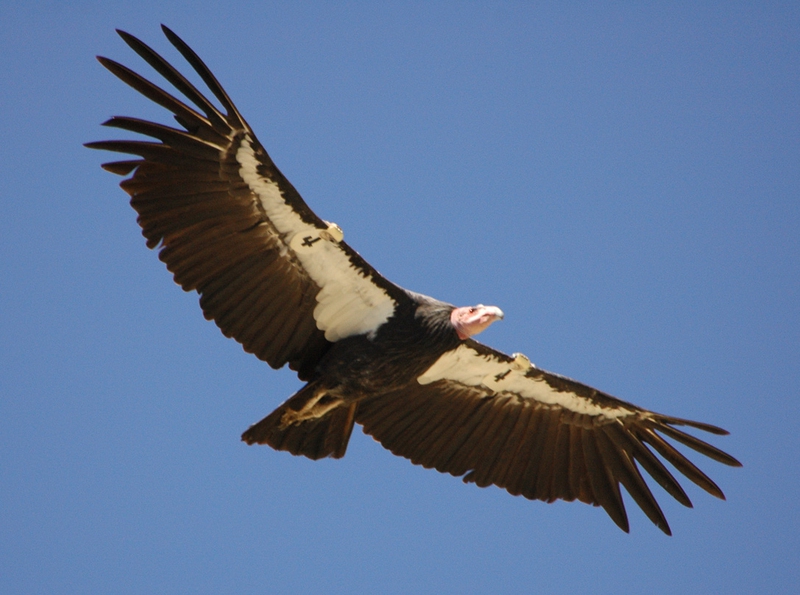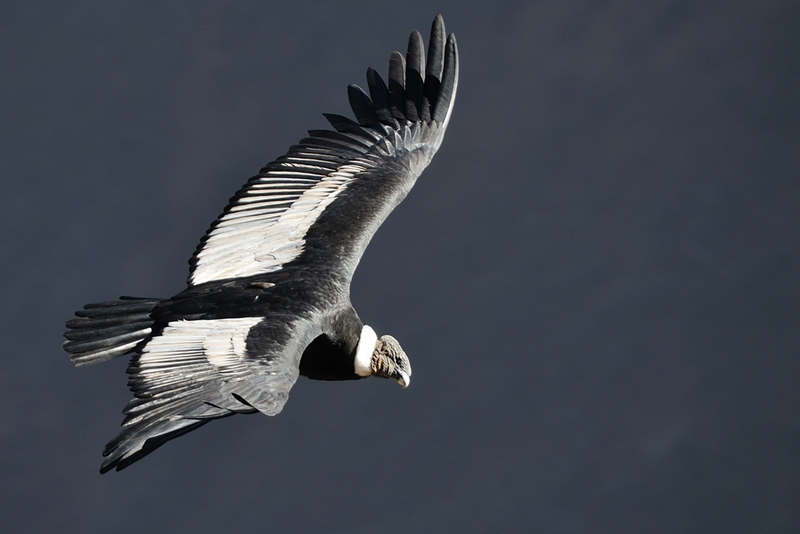In ornithology, the term "bird of prey" is described as any kind of bird, which own strong talons, keen sense of vision and strong curved beak, which has the capacity to tear flesh. These characteristics can frighten any people and can cause so much terror that these birds may attack pets or individuals. But regardless of fear, birds of prey are still fascinating creatures, which continue to be at the top of the food chain.
Some of well-known birds include hawks, vultures, eagles and others. Meanwhile, nocturnal raptors are owls, which belong to the Strigidae and Tytonidae families. It may seem difficult to determine the largest bird of prey unless you had detailed study of wingspan and size.
The standard largeness of birds should be defined as the total overall length as well as the wingspan, which are very important for birds. Thus, the largest birds of prey should be discussed properly and separately.
In Terms of Beak to Tail Length: California Condor
Length & Wingspan
The length from beak to tail of California condor range from 1.09-1.40 meters (43-55 inches), making it the largest bird of prey in our planet. California condor wingspan is around 3.0 m or equivalent to 9.8 ft. The weight of California condor is around 12 kilograms or 126 lbs.
Habitat
California condor live in oak savannas, shrub land and coniferous forests. They are found staying large trees or near cliffs, which they normally used for nesting. Individual birds can travel long in order to search for carrion.
Food Source
The primary food of California condors are carrion or dead animal carcasses. They can go on traveling just to look for carrions. These birds love to eat the carcasses of large dead animals like sheep, cattle and deer. Aside from carrions, birds of prey list also include goats, donkeys, cougars, bears, cattle, bears, pigs and horses. In some cases, Condors also take rabbits, coyotes and other aquatic mammals. For unknown reason, condors rarely eat reptile and birds.
Behavior
This largest bird of prey can reach the heights of up to 15,000 feet and can travel up to 150 miles per day to look for their next meal. Condors do not have a good sense of smell so they find their food through their keen eyesight. Condors are very similar to scavengers, they are considered as the cleaning crew of the nature. Things can be messy if condors do not look for carrions.
Population
The number of California condors had steadily declined in the 20th century until only 22 existed in the world. In order to prevent their extinction, the last 3 flying condors were taken into captivity. During the period of 1988 to 1991, no California Condors were found in the wild. However, reintroduction efforts had started in the early months of 1992 up to today. The record shows that as of May 2013, there are around 435 California condors in the world. 237 condors are flying freely in the California, Arizona and Mexico.
Relationship with Human
California condor is an important symbol to Native Americans. In fact, condor bones are found in the graves of Native Americans. Some tribes had killed condors to create ceremonial clothing out of the feathers. The process of creating ceremonial clothing out of the condor feathers had contributed to the declining numbers of the California condors.
In Terms of Wingspan: Andean Condor
Length & Wingspan
The Andean Condor is 7-8 cm shorter for its measurement from beak to tail compared to the California condor however, Andean condor has a bigger wingspan. This largest bird of prey ranges from 8 – 10 ft. The weight of Andean condor is also heavier. Male adult Andean condor has 24 to 33 lbs while females can have 18 – 24 lbs.
Habitat
The Andean condors are generally found in South America particularly in Santa Marta Mountains. They are also found in Columbia and Venezuela. Other places that Andean condors are found include Peru, Ecuador, Chile, Argentina and Bolivia. In the early part of the 19th century, Andean condors are bred in the western Venezuela up to the Tierra del Fuego and Andes, but the numbers of condors in the area had greatly reduced due to the presence of human activity.
Food Source
Andean condors are scavengers and they feed mainly on carrion. Wild condors could cover large territories and could travel more than 200 kilometers just to search of carrion. They prefer to eat largest carcasses, which may include armadillos, guanacos, rhea, alpacas, deer and llamas. But in inland condors now feed of domestic animals, which are very common now in South America. These domestic animals include horses, mules, pigs, dogs, cattle, horses and goats.
Behavior
Andean condor can soar in heights with its wings are horizontally while the primary feathers are bent upwards at the tips. The largest bird of prey flaps its wings as it rises from the ground but when it reached a moderate elevation, it rarely flaps its wings but rely on the thermals to stay aloft.
Population
Andean condor was first placed on the list of United States Endangered Species in 1970. It was added in the list because it was in danger of execution.
Threats to Andean condors are from the loss of habitat for foraging, persecution and secondary poisoning from animals that were killed by hunters.
Most farmers also think Andean condor as a threat to their livestock and to dispel this misconception, education programs were introduced. Likewise, reintroduction programs of Andean condors that were bred in captivity had started. The birds hatched were released in North American zoos and in the wild to boost the population.
Relationship with Human
Andean condor is the national symbol of Bolivia, Colombia, Argentina, Peru and Ecuador. Likewise, the Andean condor also appeared on the bank notes and coins of Chile and Colombia.
- 1.
- 2.
- 3.
- 4.




View All Comments /Add Comment